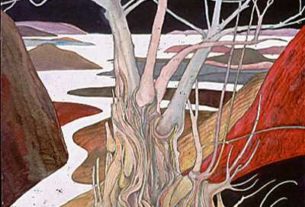In 1984, his epic indictment of Stalinism, George Orwell writes that totalitarian man exercises power over others by making them suffer. Arthur Koestler, another great analyst and foe of Soviet communism, has the interrogator in Darkness at Noon declare that previous tyrants erred in failing to sufficiently blacken the character of their victims, thus enabling them to be regarded as martyrs by future generations. Both Orwell and Koestler were masterful in delineating the difference between tyrannical regimes of the past and 20th century totalitarian states like Nazi Germany and the Soviet Union under Stalin.
Though Nuño Beltrán de Guzmán lived in the 15th and 16th centuries, his application of tyranny was completely “modern.” A man in the tradition of Heinrich Himmler and Lavrenti Beria, Guzmán paid lip service to the Spanish ideal of Christianizing New World Indians but his true goals were riches and power.
The exact date of Guzmán’s birth is unknown, and a question mark appears in such encyclopedic works as the reliable Diccionario Purrua. He must have been of middle- class background because in his youth he studied law — a profession normally beyond the reach of children of peasants and workers.
Also unknown is the exact date of his move to the New World. He came to Hispaniola (the island that today is formed by Haiti and the Dominican Republic) and between 1526-28 served as governor of the Pánuco district, where the port of Tampico is today. From the beginning, the ambitious Guzmán was determined to undermine Hernán Cortés. He envied the conqueror of Mexico and wanted to take his place. Showing the propagandist skills of another noted Nazi — Paul Joseph Goebbels — Guzmán initiated a campaign of defamation against Cortés, sending reports back to the Spanish court that Cortés had murdered his wife and was planning to set up an independent kingdom in Mexico.
Unfortunately for Cortés, he had other detractors in Mexico. In 1526, when he returned to Mexico City from campaigning in Honduras, he was chagrined when a legal body called the Juez de Residencia arrived to relieve him of his command. Though two of its three members were honorable men, they soon died. The survivor, a court notary named Estrada, was both incompetent and cruel. Estrada was replaced by a four-man Audiencia (judicial and administrative body authorized to rule Mexico), of which two also died. This left Bishop Juan de Zumárraga, a kindly man who wished to protect the Indians, and the newly-appointed head of the Audiencia — Nuño de Guzmán. Since Cortés returned to Spain in 1528 to clear his name from the damage done by Guzmán’s calumnies, that left Guzmán alone at the top.
The terror was not long in coming. Guzman sold Indians into slavery, seized the estates of his political enemies and did everything he could to undermine the supporters of Cortés. To cruelty he added cupidity. Guzmán was so greedy that he even confiscated the saddle mule of Pedro de Alvarado, who had been Cortés’s right-hand man during the Conquest.
The chief antagonist to Guzmán’s reign of terror was the principled Bishop Zumárraga. Zumárraga, as a man of the cloth, had no military or political weapons. So he resorted to spiritual ones. Indians mistreated by Guzmán were urged to lodge their complaints with the bishop. But the courageous cleric was fighting with one hand tied behind his back. When he appointed inspectors and judges to hear the complaints of the Indians, Guzmán invalidated the complaints on the technicality that Zumárraga’s consecration was not yet official.
Zumárraga next took to denouncing Guzmán from the pulpit. Guzmán, sitting in the front pew in the Cathedral, did not take kindly to public humiliation. Following one particularly scathing denunciation, Guzmán warned Zumárraga to stick to otherwordly matters in future sermons. When the bishop continued his Sunday morning diatribes, Guzmán ordered thugs to forcibly drag him from his pulpit.
In another application of modern totalitarian tactics, Guzmán took to rigidly censoring his enemy’s mail. But Zumárraga outwitted him. Accosting a sailor who was headed back for Spain, Zumárraga persuaded him to conceal a long letter of complaint to the Crown in a barrel of fat.
Zumárraga was highly respected by Charles V and his advisers. As soon as they read the letter, Charles commissioned another audiencia to go to Mexico and replace the one led by Guzmán.
Though the Crown meant well, the plan to send out a new audiencia only succeeded in subjecting another part of Mexico to Guzmán’s terror. He had heard of the plan to replace him and decided on a bold move to save face. Announcing that he planned a new conquest, he looted the Treasury, gathered together a band of followers and set off to the west.
If Guzmán was in the tradition of the German Nazis, an unfortunate Indian monarch was in the mold of the appeasement-minded Neville Chamberlain. King Tangaxoan, ruler of the Tarascan realm in Michoacán, had made the fatal mistake of trying to placate Guzmán by sending him silver and gold. This unwise act only served to whet Guzmán’s appetite. When his expedition arrived in Michoacán, he seized the king and demanded a huge amount of gold. When Tangaxoan couldn’t, or wouldn’t, produce it, Guzmán had him dragged behind a horse and then burned alive. Ever the pious hypocrite, Guzmán explained that he ordered Tangaxoan’s execution because the king had abandoned Christianity and lapsed back into paganism.
About the only positive thing that can be said about Guzmán is that he founded communities that are today important Mexican cities. These include Guadalajara, Culiacán, capital of Sinaloa, and a smaller town, Compostela in Nayarit.
While Guzmán was ravaging the west, the new Audiencia issued a warrant for his arrest. Attempting to escape, he trekked eastward over the sierra but was captured in 1536 near the mouth of the Pánuco River, the region where he had served as governor between 1529-31.
Between 1536-38 Guzmán languished in a Mexico City prison. Then he was brought back to Spain in chains and remained in prison until his death in 1550.
The damage this colonial Himmler did was undone mainly through the work of such humane and enlightened clerics as Bartolomé de las Casas and Vasco de Quiroga. This was particularly true of Quiroga, who performed his good works in the very same region of Michoacán that Guzmán had so barbarously terrorized.


